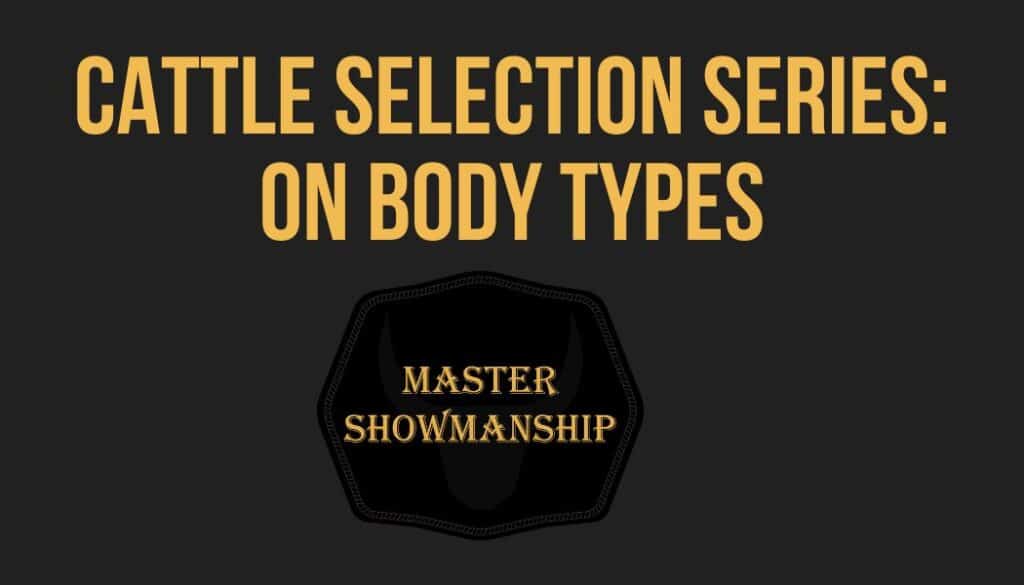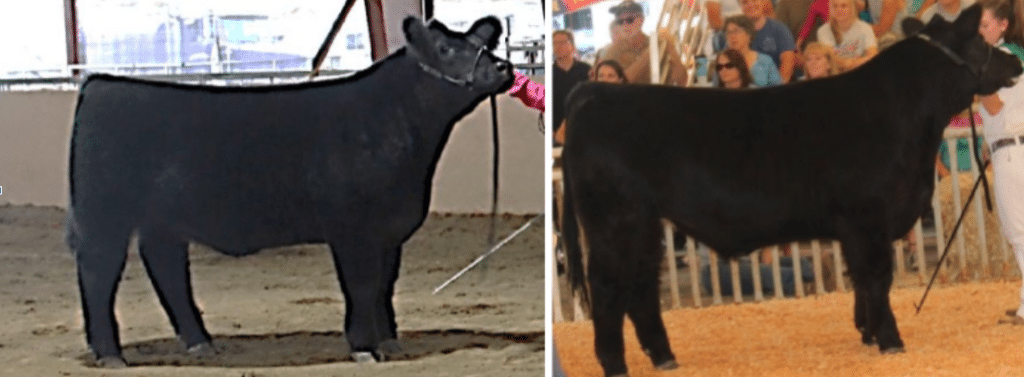
Lets dive into three components of selecting a show calf that will help you win at your next show. Three characteristics that you want to understand are depth of body, frame size, and length of body. In general, all three of these come and go with the style of the day. So understanding them will help you to pick a calf that fits in those styles and is popular whenever you are showing. Lets look at them more closely.
Depth of body
Depth of body is viewed from the profile. You want a low flank on your steer and a belly that hangs low in a sense. This is for practical reasons. The more tank a steer has the easier it will be to convert food into meat or if it is a heifer to carry babies if she is being saved for breeding purposes. We don’t want a pot belly that blows out to the side too much, but instead we want one that hangs low and natural. We used to want a hound dog look in our animals where the flank and belly were high and tight, but the style today is quite the opposite. You want your steer to be neat and pretty up front and deep and full in the middle. This tends to create cattle that are very rectangular with both their top and bottom lines staying even all the way from front to rear. The black steer on the left is correct in his flank and belly with the proper shape, but he could even be deeper bellied in the back third of his body. The steer on the right is very old style and tight flanked. His flank is the opposite of what you want to purchase for the show ring today.

Frame size is another consideration you should make, but don’t make it your priority. It’s not a good choice for example, when showmen choose tall framed cattle simply because the showman is tall. Today the style of steer is moderate sized. Tall cattle were in style ten years ago and extremely short cattle just went out of style. Today we want medium height, reasonably sized steers. If you can’t tell how tall your steer is going to be use the cannon bone for reference. The longer your calf’s cannon bone is, the taller he will be. If you look at the three cattle below the steer on the left is a larger framed steer than the one on the right and the steer in the center is even smaller framed than he. The steer on the far right is more compact in a tighter package where the steer on the left is taller and longer legged.
Another thing you will consider is length of body. This is an extremely important consideration since the cattle we are showing are intended for the meat industry. Judges always take time to evaluate the loin and the length of hip. Today we try to stay clear of short bodied steers. Medium length steers are easily accepted, but long bodied cattle are ideal. To evaluate this, you will view your calf from the profile. The length of loin and hip are the most important areas to consider. You can evaluate the calf from a visual stand point by standing away and comparing the calf side-by-side with other animals. Below I have included two pictures to illustrate the length of body in cattle. Although he is also larger and more mature, for demonstration purposes you can see that the steer on the left is longer bodied than the steer on the right.

There you have it, an overview of some body types and styles to be aware of as you learn to select show cattle.
Once you have your animals, you can take him to the next level, training and mastering showmanship. If you want some help mastering cattle showmanship and impressing the judges, you might want to check out my book Show Your Way To The Top at mastershowmanship.com/shop
Helpful tips directly in your inbox!